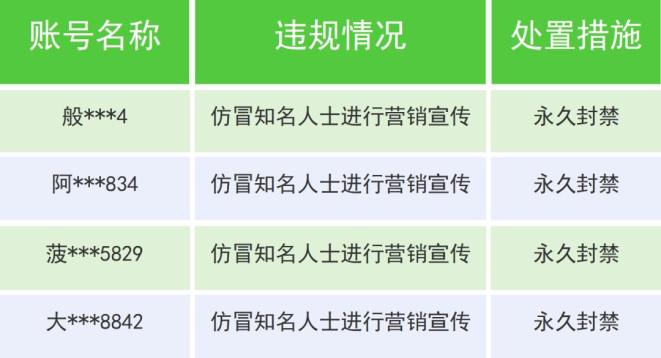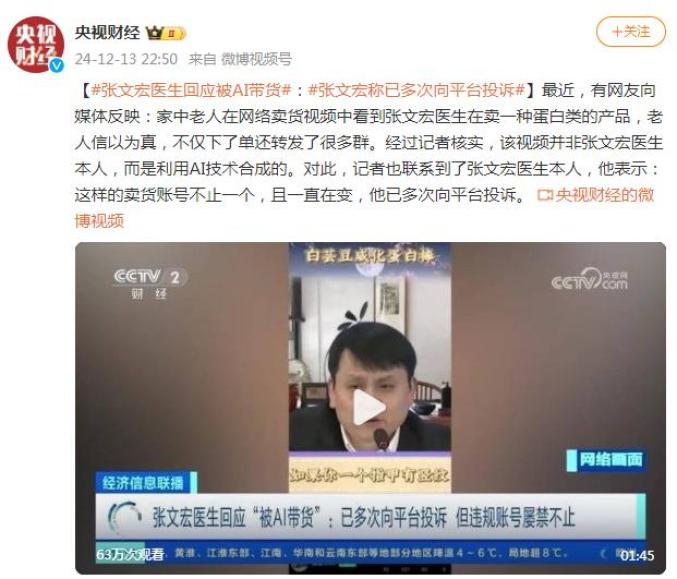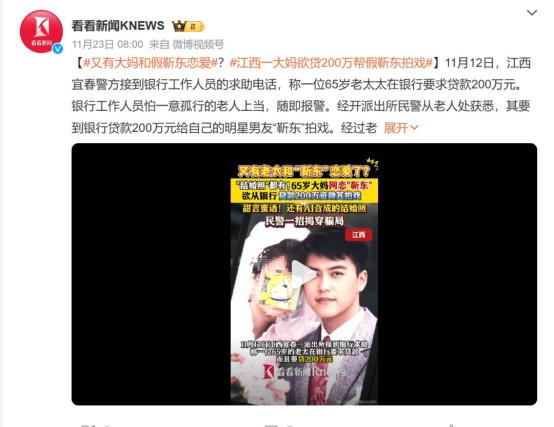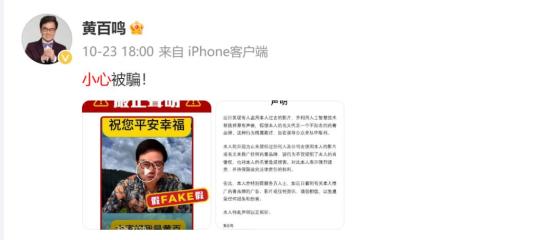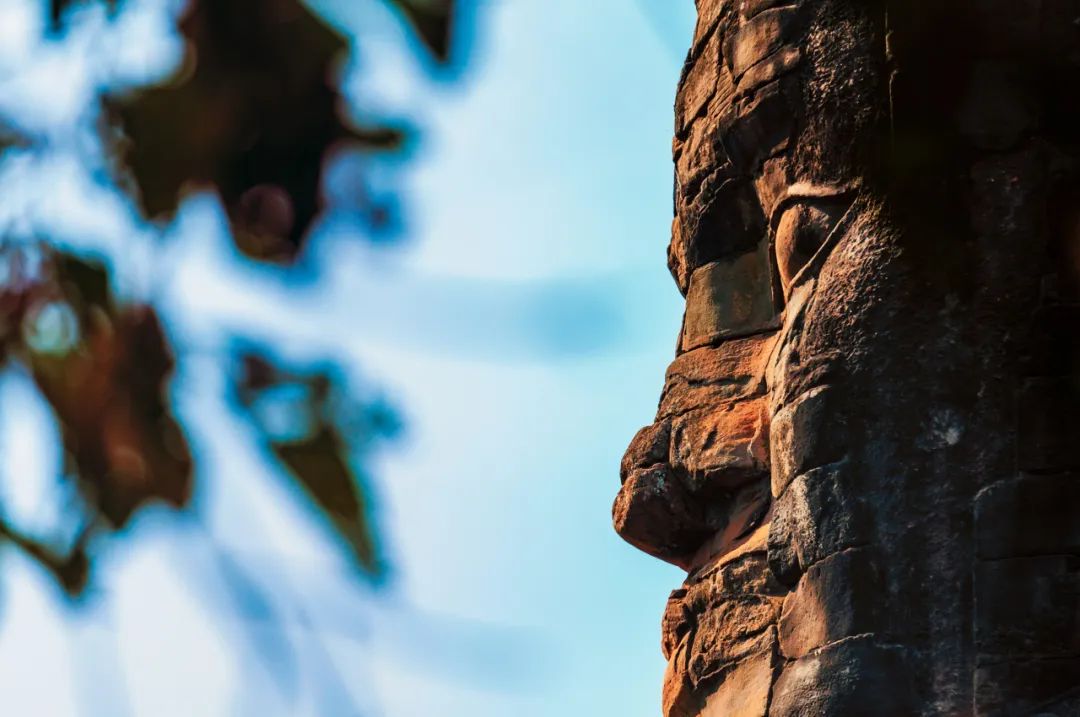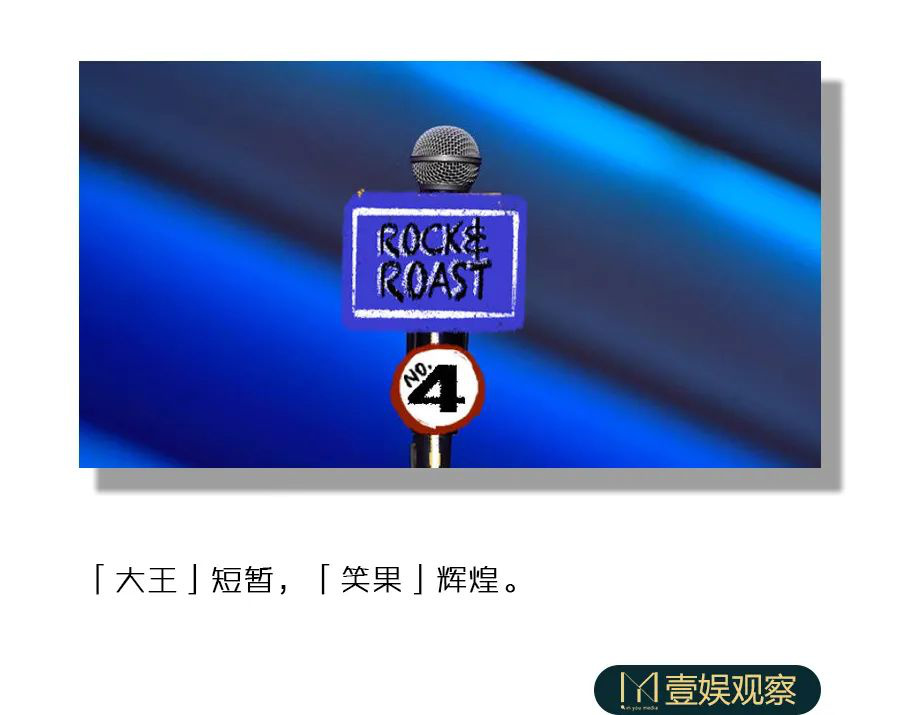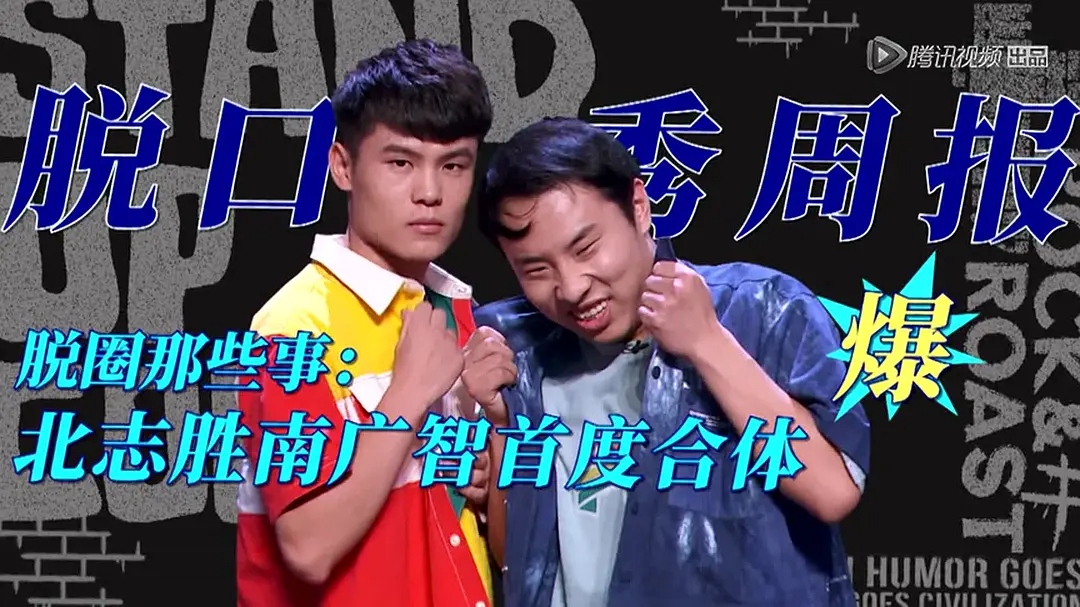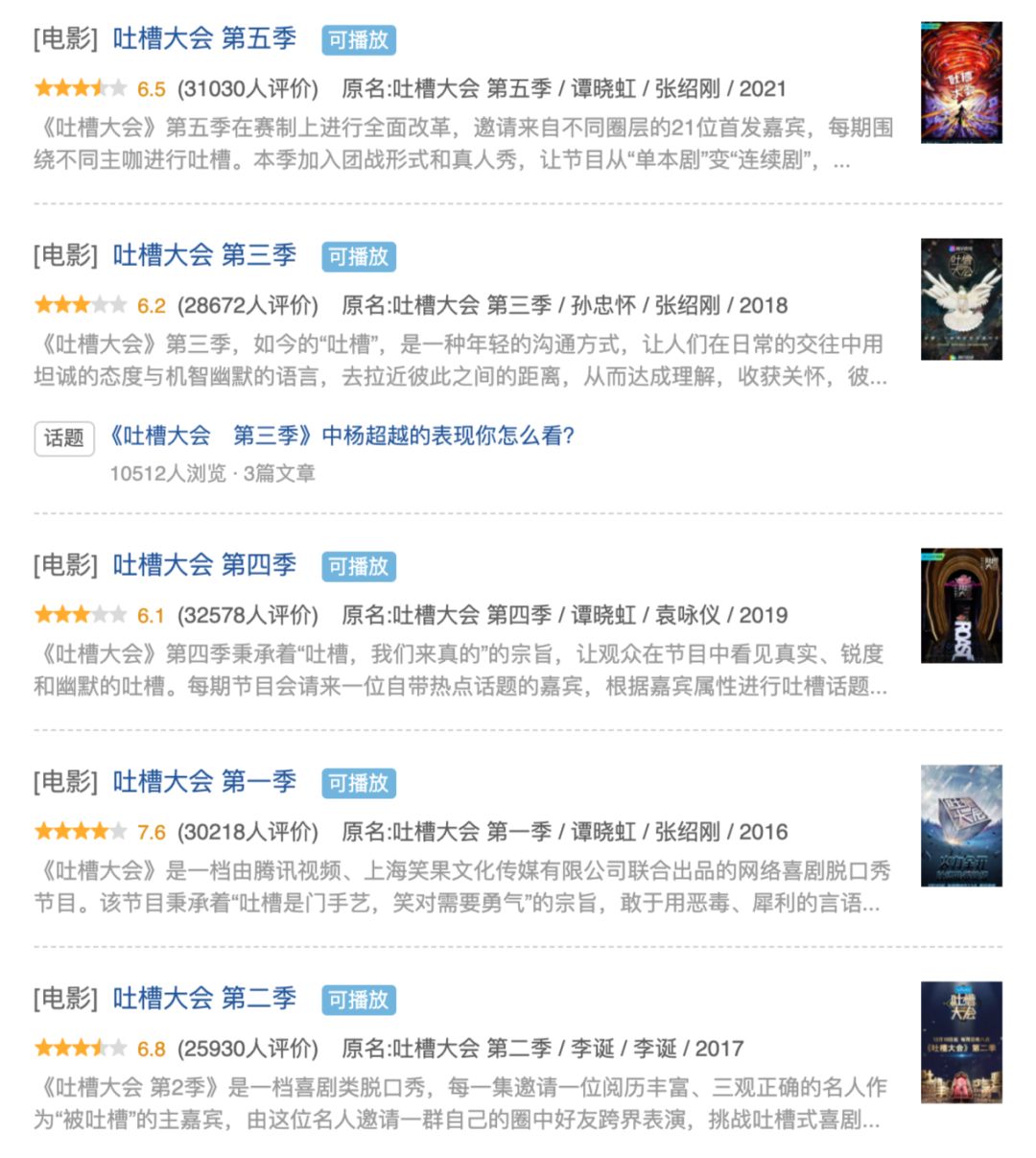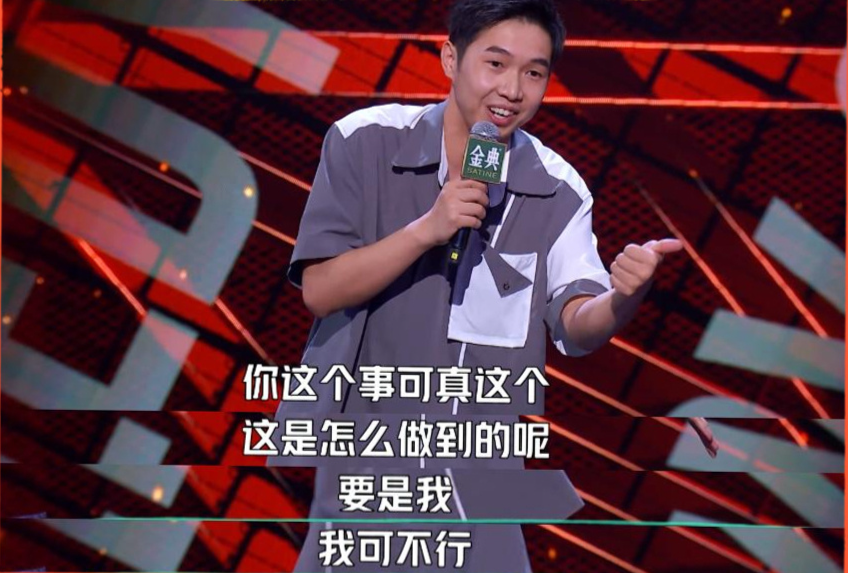On August 13th, Xu Zhucheng wrote an application report and handed it to the Shanghai Dictionary Publishing House, where he worked. "The Party branch please immediately transfer it to the leading comrades of the publishing bureau". The report said: "In the middle of last month, the two newspapers in Hong Kong, Wen Wei Po, were connected. Later, Li Zisong and Yu Hongxiang, the deputy directors of the newspaper, jointly sent a letter, formally inviting me to go to Hong Kong with my wife Zhu Jiale to attend the newspaper’s 32nd anniversary celebration on September 9th. I am the founder of the newspaper, and I am duty-bound. When I met Comrade Chen Chenyi, I got his approval. After that, I wrote back to the newspaper and promised to arrive in Hong Kong around September 1, and I was prepared to stay in Hong Kong for about one month. Recently, the newspaper wrote again, asking me to buy two round-trip air tickets for direct flights to Hong Kong. The newspaper is responsible for the tickets, and they are going to meet them at the airport. " Finally, he said: "I hereby report the situation as above, please apply for entry and visa procedures for the agent as early as possible." Chen Yi mentioned in the report was then Deputy Secretary of the Shanghai Municipal Committee of the Communist Party of China and Minister of Propaganda Department. Attached to the report are two telegrams signed by Li Ziyong and Yu Hongxiang, an invitation letter and a separate letter from Yu Hongxiang.

At the end of 1948, Hong Kong Wen Wei Po colleagues took a farewell photo for Ma Ji Liang, the editor-in-chief who was going to the United States (that is, Donna, fourth from the left in the front row), and Xu Zhucheng, the chief editor in the front row.
Apply for approval at different levels to start the exit application procedure.
According to "The Process of Xu Zhucheng Going to Hong Kong to Attend the Wen Wei Po Celebration and Go through the Exit Procedures" (handwritten file) by Shanghai Publishing Bureau, it can be seen that Xu Zhucheng’s application for going to Hong Kong has a wide range from Shanghai Dictionary Publishing House to Publishing Bureau, General Office of the Municipal Government, Foreign Affairs Office, Municipal Planning Commission and Shanghai Branch of Bank of China, and involves the Propaganda Department of Shanghai Municipal Committee of the Communist Party of China and even the Central Propaganda Department.
On the 13th, the Publishing Bureau received Xu Zhucheng’s application report submitted by Shanghai Dictionary Publishing House, and in accordance with the telephone instructions of Ma Feihai, deputy director of the Propaganda Department of Shanghai Municipal Committee of the Communist Party of China and director of the Publishing Bureau, drafted a request report to the municipal government office, "Going through exit formalities for Xu Zhucheng and his wife to attend the Wen Wei Po celebration in Hong Kong". At 4 pm, the bureau submitted a report to the general office of the municipal government, which stated: "Xu is the founder of the newspaper and has great influence overseas. Therefore, our bureau agrees that Xu Zhucheng and his wife are invited to go to Hong Kong, and all expenses will be borne by the Hong Kong Wen Wei Po (the round-trip air ticket fee of HK$ is to be paid by the Bank of China). The pocket money in Hong Kong is requested to be solved by the municipal government office (the 45 yuan converted into RMB is paid by Shanghai Dictionary Publishing House). Due to the tight time, it is urgent to go through the exit formalities. Please give instructions immediately. " (Print file) The report is also copied to the Propaganda Department of the Municipal Party Committee, the Municipal Foreign Affairs Office and the Municipal Planning Commission, all of which are the departments involved in the exit application procedures and expenses. When the general office of the municipal government received the letter, it was requested that the propaganda department of the municipal party Committee indicate the situation agreed by the municipal party Committee in the report and affix the official seal as the basis.
On the morning of the 14th, the report of the Publishing Bureau was delivered to the Propaganda Department of the Municipal Party Committee. Ma Feihai wrote in the upper left corner of the report: "Comrade Chen Yi told us that the Municipal Party Committee agreed that Xu Zhucheng would go to Hong Kong, and therefore decided to appoint Xu Zhucheng as a consultant of Wen Wei Po. The Propaganda Department of the Municipal Party Committee asked Publicity Department of the Communist Party of China, and Publicity Department of the Communist Party of China also agreed that Xu would go to Hong Kong. " He signed at the bottom of the comment and stamped the official seal of "Propaganda Department of Shanghai Municipal Committee of the Communist Party of China". Subsequently, the report was sent to the general office of the municipal government, and the agent said that he would go through the formalities after completing the political examination procedures and filling out the exit form. In the afternoon, the general office of the municipal government called the Publishing Bureau and asked for Publicity Department of the Communist Party of China’s approval, hoping to contact the Municipal Foreign Affairs Office to find out how to handle the formalities. The Publishing Bureau contacted the Foreign Affairs Group of the Municipal Foreign Affairs Office by telephone, and the group also expressed the need for Publicity Department of the Communist Party of China’s approval, saying that it must have central-level documents before it can be handled.
Immediately, the Publishing Bureau contacted the Propaganda Department of the Municipal Party Committee to inform the Foreign Affairs Office of its opinion, and hoped that the report to Publicity Department of the Communist Party of China would be submitted by the Propaganda Department. Twenty minutes later, the Propaganda Department of the Municipal Party Committee called back and said that the report to Publicity Department of the Communist Party of China would not be written, and there was a approval from the general office of the municipal government to the Publishing Bureau, with a copy to Publicity Department of the Communist Party of China. After receiving the approval, the Publishing Bureau should make a long-distance call to Publicity Department of the Communist Party of China to ask the leaders’ opinions, and ask Publicity Department of the Communist Party of China to send a telegram.

Xu Zhucheng was taken in Hong Kong in November 1980, and Yu Hongxiang was on the right.
Who will bear the installation cost is a problem.
On the morning of 15th, the Publishing Bureau informed Shanghai Dictionary Publishing House to issue a letter of introduction to Xu Zhucheng to buy clothes. In the afternoon, when the publisher issued a letter of introduction, he said: Mrs. Xu Zhucheng is a housewife. How to deal with her clothing expenses? The manager of the publishing bureau telephoned the secretariat of the Municipal Foreign Affairs Office, and the answer was: if Xu’s family economic situation is acceptable, his wife’s clothing expenses should be borne by himself; If the financial situation is tight, her husband’s unit can give appropriate subsidies, but it does not make up for 350 yuan. The Publishing Bureau reported the opinions of the Foreign Affairs Office to the Propaganda Department of the Municipal Party Committee and asked for instructions: "How to master a bigwig like Xu?" The person in charge of the Propaganda Department Office of the Municipal Party Committee replied: "I am mainly responsible for Mrs. Xu’s clothing expenses, and the dictionary publishing house can make a subsidy as appropriate, because Xu made up a sum of money (several thousand yuan) after correcting from the Rightists, and the economy is ok. It is up to you to decide how much to make up. " The manager of the publishing bureau thought about the pocket money from Mrs. Xu’s clothing expenses. Then, I contacted the general office of the municipal government again, saying that the original report of the Publishing Bureau only mentioned 45 yuan pocket money for Xu himself and neglected Mrs. Xu, asking for instructions on how to deal with it. The general office of the municipal government asked the Publishing Bureau to contact the Municipal Foreign Affairs Office, hoping that the leaders of the Foreign Affairs Office could make up for Mrs. Xu’s pocket money when signing the opinions, so that the general office of the municipal government could approve the documents according to the opinions of the Foreign Affairs Office. The person in charge of the publishing bureau contacted the relevant personnel of the Municipal Foreign Affairs Office and said that this was the first time that Xu Zhucheng was a bigwig and went with his wife. Please ask the Foreign Affairs Office to decide how to control the policy. The other party’s reply report has just been received. Let’s wait and see.
On the afternoon of 16th, the agent of the Publishing Bureau reported to Song Yuanfang, deputy director of the Bureau, about the clothing expenses of Mrs. Xu and Zhu Jiakai. Song said that Xu himself didn’t propose it, so we don’t have to think about his wife. He proposed it and then thought about it. On the same day, Shu Renqiu, president and editor-in-chief of Shanghai Dictionary Publishing House, called the publishing bureau and asked: Xu went to Hong Kong for a private invitation, but he didn’t go through the organization. Why should Xu pay for his clothing?
On the morning of 18th, the Secretariat of the Municipal Foreign Affairs Office replied to the general office of the municipal government, saying: "Regarding Xu Zhucheng and his wife’s going to Hong Kong to attend the celebration, the leaders of the Foreign Affairs Office agreed with the opinions of the Municipal Publishing Bureau. If the municipal government agreed, please ask the Propaganda Department of the Municipal Party Committee to report to Publicity Department of the Communist Party of China for approval." (Handwritten file) After reading it, the person in charge of the general office of the municipal government signed a note: "The report of the Municipal Publishing Bureau on Xu Zhucheng and his wife going to Hong Kong to participate in the Wen Wei Po celebration has been agreed by the Propaganda Department of the Municipal Party Committee; Approved by the Municipal Foreign Affairs Office. I plan to send it to Comrade Xingzhi for approval. " He also wrote a big word "urgent" in the upper right corner. In the afternoon, the Municipal Foreign Affairs Office informed the Publishing Bureau by telephone that the leaders of the Foreign Affairs Office had approved it, and hoped to tell Xu whether it was a public invitation or a private invitation. The publishing bureau immediately contacted the cadre department of the Propaganda Department of the Municipal Party Committee. After asking for instructions, Vice Minister Wu Jian replied that Ma Feihai would decide whether Xu was invited publicly or privately. Ma said that Xu’s trip was a public invitation, and Xu’s clothing expenses were paid by Dictionary Publishing House, and his wife’s clothing expenses were handled as usual. The publishing bureau also informed the dictionary publishing house of this opinion, and informed the municipal foreign affairs office and the municipal office.
On the 19th, Zhao Xingzhi, secretary of the Shanghai Municipal Committee of the Communist Party of China and vice mayor in charge of foreign affairs, gave instructions to "agree" on the submission of "Please read and approve Comrade Xingzhi quickly". At noon, the agent of the publishing bureau called Shu Renqiu about Xu Zhucheng’s clothing expenses, and the other party said that Ma Feihai had told him.
On the 20th, the general office of the municipal government proposed the document No.305 (1980) on Reply to the Publishing Bureau about Xu Zhucheng and his wife’s going to Hong Kong to attend the Wen Wei Po Celebration, saying: "Your Bureau’s Shanghai Edition Bureau (80) has made a request report No.29, and it has been agreed by the Municipal People’s Government that Xu Zhucheng and his wife were invited to Hong Kong to attend the Wen Wei Po Celebration, and all expenses will be borne by the Hong Kong Wen Wei Po, and the round-trip air ticket fee and pocket money in Hong Kong will be paid for. (handwritten file)
On the morning of 21st, Xiao Che, secretary general of the municipal government, signed "Agree to Send" on the document list prepared by the general office. 23 copies of the document were printed and copied to the Central Propaganda Department, the General Office of the Municipal Party Committee, the Organization Department, the Propaganda Department, the Municipal Planning Commission, the Foreign Affairs Office, the Municipal Finance Bureau, and the Bank of China Branch. When the publishing bureau receives the telephone notice, the agent will go to the municipal office to retrieve the approval documents. In the afternoon, according to the arrangement of the Propaganda Department of the Municipal Party Committee, he telephoned the Central Propaganda Department. Ma Feihai said that the Propaganda Department of the Municipal Party Committee had contacted Publicity Department of the Communist Party of China, and it was better to find the original handler. On the phone, the other party said that it still needs a report from the Propaganda Department of the Municipal Party Committee before Publicity Department of the Communist Party of China can approve it, and directly contacted the relevant personnel of the Propaganda Department of the Municipal Party Committee to handle it.
On the morning of the 22nd, the agent of the Publishing Bureau called the agent of Dictionary Publishing House to ask about the progress of Xu Zhucheng’s purchase of clothes. The other party said that Xu had written an IOU from 500 yuan, and the financial staff told him that he could apply for approval in 350 yuan and use 150 yuan as a loan. The agent also asked Xu if he had any problems in the process of bidding for Hong Kong. The other party said that Xu knew very well that he had talked with the Hong Kong Wen Wei Po newspaper to invite him to go, and the motor and Wang Wei prepared his luggage for him. At that time, Ma and Wang were the editors-in-chief of Shanghai Wen Wei Po and Jiefang Daily respectively, and they were acquaintances of Xu in the press. In the afternoon, the manager reported the matter to a leader in the bureau, who asked him to inform the dictionary publishing house to report the situation to Shu Renqiu. The other party said that he had told Shu, but Shu said that he didn’t know or heard about it. The manager of the publishing bureau also told him that because of the troublesome procedures, it was best for someone to accompany Xu to buy clothes.
On the afternoon of 26th, the person in charge of the Publishing Bureau heard from his colleagues that Xu Zhucheng was received by Zhang Chengzong, director of the United Front Work Department of the Shanghai Municipal Committee of the Communist Party of China, and promised to help with the formalities. Someone in the Taiwan office could contact him, that is, call him to inquire, and the reply was that they had to do a good job in the registration form of the Public Security Bureau before they could handle it.

The Hong Kong Wen Wei Po stock held by Xu Zhucheng in his early years.
Multi-faceted care was finally allowed to take place.
On the morning of 27th, the agent of the Publishing Bureau went to the Municipal Public Security Bureau and Huangpu District Public Security Bureau with relevant approval documents, and the application for going to Hong Kong was rejected. After contacting the Municipal Public Security Bureau, I knew that I had to apply for leaving the country as a private visit.
On the morning of 28th, the agent of the Publishing Bureau went to the Public Security Bureau to get the form, sent it to Xu Zhucheng to fill it out, and then sent it to the Public Security Bureau. Because the four forms were filled in by two people respectively, and Xu mistakenly filled in one person, the agent of the publishing bureau went to collect two more forms and sent them to Xu to fill in. In the afternoon, the agent of the Publishing Bureau went to the Public Security Bureau to send Xu’s political review form and Publicity Department of the Communist Party of China’s telephone records. Immediately, he was issued a permit to enter Hong Kong on September 1, valid for half a year.
On the 29th, the agent of the Publishing Bureau reported Xu Zhucheng’s access to Hong Kong on September 1st and asked him to tell Ma Feihai. On the same day, the Organization Department of Shanghai Municipal Committee of the Communist Party of China issued a notice: Xu Zhucheng was appointed as a consultant of Shanghai Wenhui Daily. This means that his participation in the celebration of Wen Wei Po in Hong Kong is no longer an ordinary editor of Shanghai Dictionary Publishing House.
On the afternoon of the 30th, the manager of Ma Feihai’s publishing bureau went to the Xu family to say goodbye. Xu Zhucheng said that Zhang Chengzong said that he had more relatives and could spend more time. Ma Feihai told Xu that he could spend more time.
At this point, Xu Zhucheng’s application for going to Hong Kong, which affected the whole process, was a complete success. Because it is still in the early stage of reform and opening up, there are many entry and exit rules, the procedures for applying for relevant documents are complicated, and the process of going back and forth is lengthy, and there are many twists and turns, which is far from the convenience at present. However, the close communication between the party and government organs and timely handling have finally enabled him and his wife to make a smooth trip.
On September 1st, Xu Zhucheng and Zhu Jiakai took a plane at Hongqiao Airport, and those who saw him off were Shu Renqiu, Feng Yingzi and others. They flew to Guangzhou first, and then entered Hong Kong through the customs by train. At the station, they were greeted by Yu Hongxiang, vice president of Wen Wei Po, Wang Jiazhen, general manager, and Ceng Minzhi, deputy editor-in-chief.
This is Xu Zhucheng’s return to Hong Kong after 30 years. At that time, Wen Wei Po Pavilion moved from a small building on Hollywood Road to a 13-storey building built by Wan Chai Road. He and Zhu Jiakai stayed at the newspaper guest house, not only attended the reception celebrating the 32nd anniversary of Wen Wei Po in a happy mood, but also visited the Chinese University of Hong Kong, Ocean Park, Tiger and Leopard Villa and Song Cheng by the host, met with old friends such as Li Qiusheng, Lu Keng, Bu Shaofu and Luo Chengxun, and made new friends such as Cha Liangyong (namely Jin Yong), Fu Chaoshu and Li Yi. Xu Zhucheng also accepted interviews with several local newspapers and periodicals, and at the request of Luo Chengxun and Cha Liangyong, he opened essay columns in New Evening News and Ming Pao respectively to share his experiences and feelings with readers. In the meantime, he was invited to discuss with Wen Xuan, editor-in-chief of contention monthly magazine, the plan of establishing contention daily, and he became the editor-in-chief and chief editor, and proposed to invite Feng Yingzi and Qian Bocheng to be deputy editors in charge of interview and editorial affairs, and then stopped participating in this matter for some reason.
Xu Zhucheng and Zhu Jiale stayed in Hong Kong for less than three months, and returned to Guangzhou on November 23 of the same year, and returned to Shanghai after staying for ten days.

Xu Zhucheng and Zhu Jiake in their later years
Write to friends in Hong Kong to entrust them with celebrating their birthday.
Xu Zhucheng, born in 1907, happened to be his eightieth birthday in 1987. As the saying goes, "Life is seventy years old." Eighty years old is a high birthday, which is enough to celebrate. In 1986, he was in his eighties. On June 26th, old colleagues of Wen Wei Po, such as Qin Benli and Mei Duo, gave a banquet in honor of them. Later, editor-in-chief Mada and several deputy editors held a banquet in the banquet hall of Shanghai Building to celebrate their birthday, and Pan Weiming, then director of the Propaganda Department of the Shanghai Municipal Committee of the Communist Party of China, was also present to congratulate them.
For Xu Zhucheng, the next year is 80 years old, and friends’ birthdays are even more inevitable. On August 27th, he wrote to Lu Keng, the president of Hong Kong People, whom he had known for many years, saying, "I have a little thing to offer, and I will celebrate my brother’s eightieth birthday next year, and I have been engaged in journalism for sixty years. My friends Ba Jin, Fei Xiaotong and Qian Weichang initiated it to commemorate it, and advocated a feast in Hong Kong for all the friendship. My younger brother asks himself that he has no expertise in learning. Compared with his peers Ceng Xubai and Cheng Shewo, he is just a younger brother. However, he once presided over the writing of Ta Kung Pao in Hong Kong, Guilin and Shanghai, and presided over the Shanghai Wen Wei Po for many years, creating a literary collection in Hong Kong. For decades, his preparation was bumpy, but in recent years, he has been criticized by left-leaning people at home and abroad. So far, he has not dared to forget his duty as a journalist, or he has a merit. I was afraid of friends all my life, but my brother, Shaofu and Li Qiusheng were the only brothers in Hong Kong. Li Yi, Wen Tang and Cha Liangyong had a long talk with them in 1980. Mr. Hu Juren and Mr. Miao Yuzhu have long been interested. If this matter is initiated by my brother, Brother Bu and Brother Li, and is approved by gentlemen such as Li and Cha, then my brother will be "like nine tin", and then he will come to Hong Kong, take advantage of the humble occasion to be friendly with other colleagues, and talk about friendship. If "Left King" and people of the hour participate, and my brother will become a tool of "United Front", then my brother will be incompetent and can only thank you. If you are a close friend, please plan for me, and in what way is appropriate, please judge everything and give me a reply in prayer, which will be very impressive. Please come here, and write a poem! " Obviously, I want to go to Hong Kong to celebrate my 80th birthday with these cultural friends. Since joining the celebration of the 32nd anniversary of Wen Wei Po in September 1980,He has been at odds with the old rain and new knowledge there for a long time.
After receiving the letter, Lu Keng replied that he would try his best to promote it, and then faxed Xu Xin to Bu Shaofu, the president of News World, who was in Taipei at that time. Bu, a "legislator" in Taiwan Province, saw the fax before he went to the Legislative Yuan for a meeting on September 5, and published it in the column "My heart is as bright as the moon" in the new issue of News World Weekly, with the subtitle "Letter from Xu Zhucheng, an old friend of the press", and wrote: "He plans to celebrate his 80th birthday in Hong Kong next year and wants us to initiate it. The letter made it very clear,’ If there is a left king and a cloud. ""Xu Zhucheng is an old-timer in the press. I agree in principle with his hope. How to prepare for it will be discussed with other friendly people early next year. " Lu Keng also informed Li Qiusheng, the former president of Hong Kong Times, who was being treated in the United States, about Xu Xin’s contents, and he also promised to participate.
At the beginning of the following year, Xu Zhucheng went to Beijing to attend the Sixth Plenary Session of the China Democratic League. Due to his age, he resigned as a member of the Central Committee and became the newly established Standing Committee of the Central Senate Committee. During the meeting, the leaders of the NLD Central Committee learned that there had been a good response to Xu Zhucheng’s birthday celebration in Hong Kong and said that they would report the matter to the United Front Work Department of the CPC Central Committee.
At the same time, friends from Hong Kong began to prepare for their birthday. On the afternoon of March 13th, Bu Shaofu, Cha Liangyong and Hu Juren, editor-in-chief of People, met in Ming Pao Building to discuss, and initially decided that Shouqing would be jointly sponsored by News World, Ming Pao and People. On the 24th, the three men got together again to discuss and jointly sent an invitation letter to Xu Zhucheng: "My brother is honored to be very old this year, and I am willing to take this opportunity to have a friendly gathering with overseas countries in Hong Kong and say goodbye without any regret. Young husband is an old friend, and Liang Yong and Ju Ren are backward in the newspaper industry. They have been attached to the end and have been taught. I sincerely welcome them here. We sincerely invite the virtuous couple and their eldest grandson to come to Hong Kong at the end of April and the beginning of May. The congratulatory dinner is scheduled for May 9th. Old friends of my brother, such as Mr. Chen Jiying of Taiwan Province and Mr. Li Qiusheng of the United States, also expressed their willingness to come to Hong Kong to pay tribute to Rong Qing. " Long affection, vividly on the paper.
In late March, Xu Zhucheng went to Beijing again to attend the fifth meeting of the 6th Chinese People’s Political Consultative Conference. During the meeting, he learned that the leaders of the United Front Work Department of the CPC Central Committee had instructions on his birthday celebration in Hong Kong. It is said that this matter was reported layer by layer and was approved by Deng Yingchao, Chairman of Chinese People’s Political Consultative Conference. Next, there are specific matters, such as the United Front Work Department of the Shanghai Municipal Committee of the Communist Party of China applying for the Hong Kong Pass on its behalf, and the Shanghai Municipal Committee of the NLD investing in purchasing gifts, and so on.
On the sidelines of the CPPCC meeting, Luo Chengxun, former deputy editor-in-chief of Hong Kong Ta Kung Pao and editor-in-chief of New Evening News, and Fan Yong, general manager of Beijing Sanlian Bookstore, hosted a banquet in a restaurant at Jiaodaokou to celebrate Xu Zhucheng’s birthday. Luo Chengxun wrote two impromptu poems, praising "Jin Ge is a veteran in the past 60 years" and saying that "the great works have pushed the times forward, and the names are recorded in another volume for no reason". Among them, "Jin Ge" is the pseudonym used by Xu Zhucheng to write the column "Shanghai Letters" for Ming Pao, and "Bao Hai" is the book "Bao Hai Old News" published in Shanghai on his behalf. "Da Wen" refers to Ta Kung Pao and Wen Wei Po, while "another book for no reason" refers to the experience of being classified as "Rightist" in 1957.

On June 26th, 1987, the first edition of Shanghai Wen Wei Po celebrated the 60th anniversary and 80th birthday of Xu Zhucheng’s journalism.
The situation suddenly changed and the application for going to Hong Kong died.
In late April, the preparations for Xu Zhucheng and Zhu Jiakai’s visit to Hong Kong were basically ready. Xu Shilin, the eldest grandson who accompanied them, took leave from his work unit in Cangzhou, Hebei Province to Shanghai. The clothes customized by the three of them were completed; The purple sand teapot gift ordered by the Shanghai Municipal Committee of the NLD from Xu’s hometown Yixing has also arrived. The hosts in Hong Kong chose the hotels where they stayed and the restaurants where they held banquets. In addition to Chen Jiying and Li Qiusheng, Liang Houfu, an old Ta Kung Pao colleague who has lived in the United States for many years, will also attend, and has booked a flight.
One day, the Shanghai Municipal Committee of the NLD sent someone to send three air tickets to Shenzhen on May 3, and two passes, which belonged to Zhu Jiakai and Xu Shilin, but not Xu Zhucheng’s. What a surprise! Just like singing a play, the supporting role can go on stage, but the protagonist has lost the right to go on stage. How can this play be sung? That afternoon, the author came to wish Mr. Xu Zhucheng a smooth trip to Hong Kong to celebrate his birthday, but he happened to witness the disappointment and incomprehension of his family.
It is reported that at the conference to commemorate the centenary of Liao Zhongkai’s birth held by all walks of life in Guangdong in the second half of that month, Xu Jiatun, secretary of the CPC Hong Kong and Macao Working Committee and director of Xinhua News Agency’s Hong Kong branch, told Yan Mingfu, director of the United Front Work Department of the CPC Central Committee, the decision on this matter: "We consider taking care of Mr. Xu Zhucheng and hope that he will not come to Hong Kong for his birthday …" Yan Mingfu then told the United Front Work Department of the CPC Shanghai Municipal Committee and asked the NLD to do a good job of dissuasion and explanation.
On the evening of 28th, Gao Tian, vice chairman of the NLD Central Committee, and Tan Jiazhen, vice chairman of the NLD Central Committee and chairman of the NLD Shanghai Committee, visited Xu Zhucheng and repeatedly explained that the relevant departments made this decision in order to protect him from being used. During the conversation, they seriously asked Xu Zhucheng: "Have you written a letter to Bu Shaofu that you should not contact with leftists?" He added, "People have published this letter in the journal. Could it be added on purpose?" Xu Zhucheng disapprovingly replied: "The letter was written eight or nine months ago. I can’t remember what I wrote." After that, he just smoked and stopped talking.
Gao Tian conveyed to Xu Zhucheng the instructions of Fei Xiaotong, chairman of the NLD Central Committee, and held a birthday celebration for him in Shanghai in June.
On May 3rd, Xu Zhucheng was scheduled to go to Hong Kong. However, Hong Kong did not know what had happened, so it booked a hotel room and entrusted Xu Zailao Ta Kung Pao’s subordinates, namely Ming Pao Yi Xihe and Wen Wei Po Ceng Minzhi, to meet him at Shenzhen Luohu Port. Xu Zhucheng had to send a telegram to Cha Liangyong to tell him that his wife was hospitalized due to an acute illness, but his children and grandchildren dissuaded him from going.
A few days later, friends in Hong Kong confirmed that the birthday celebration was hopeless and had to cancel the birthday banquet scheduled for 7 pm on the 9th at Donghai Restaurant in Wan Chai. Li Qiusheng and Liang Houfu in the United States heard the news and returned their air tickets. Chen Jiying, an old colleague of Ta Kung Pao and the executive director of Taiwan Province’s China Literature and Art Association, has flown to Hong Kong from Taipei and brought some books and gifts. He made a long-distance call and asked his old friend who had been apart for many years, "Is it possible to come to Hong Kong?" Xu Zhucheng still used his old wife’s illness as an excuse and apologized.
Xu Zhucheng’s trip to Hong Kong failed in the end. According to people familiar with the incident, a leftist newspaper director in Hong Kong had worked with Xu Zhucheng in his early years, and the relationship was not harmonious. Based on the Xu letter published by News World, he advised the leaders of Xinhua Branch, which led to the abortion of the upcoming birthday celebration. Hong Kong is a place with extremely complicated political environment, which is completely different from the visit to Hong Kong in September 1980. None of the people who came forward to celebrate Xu Zhucheng’s birthday were left-wing people, and the relevant departments of the central government had other considerations about this, so it is reasonable not to let him go.
Hold a grand birthday party in Shanghai
Although he didn’t even get a pass to Hong Kong, Xu Zhucheng was quite generous. Later, a friend talked to him about this matter. He simply said, "Hong Kong was originally my old place to visit, and I just wanted to get together with friends I haven’t seen for years. If I don’t go, I won’t go!"
Hong Kong fell short, and Shanghai is here to make a grand event, which obviously means compensation. On the afternoon of June 25th, the day after Xu Zhucheng’s birthday (Memoirs of Xu Zhucheng and Biography of Xu Zhucheng were both mistaken as "the first day" on the 24th), the Shanghai Municipal Committee of the NLD and Shanghai Wenhui Daily invited people from all walks of life to have a discussion at Jinjiang Hotel to celebrate Xu Zhucheng’s 60th anniversary and eightieth birthday in journalism. At the symposium, Motor, editor-in-chief of Wen Wei Po, spoke first, saying that Xu Lao is a famous journalist, editor and news critic in China’s press. His spirit of pursuing truth and progress, loving journalism, studying and developing business is very valuable. His experience in running a newspaper should be carefully studied and summarized. Su Buqing and Tan Jiazhen, vice-chairmen of the NLD Central Committee, congratulated Xu Zhucheng on behalf of the NLD Central Committee and the NLD Shanghai Municipal Committee respectively, saying that Xu Lao stood upright and upright in the face of the Kuomintang dictatorship and reactionary rule and adhered to national integrity, which reflected the noble character of China intellectuals who were "mighty and unyielding, rich and obscene, and poor and humble"; After liberation, the spirit of "a willing ox" has been continuously developed in the attitude towards the Communist Party of China (CPC) and people’s journalism.
Mao Jingquan, member of the Standing Committee of the Shanghai Municipal Committee of the Communist Party of China and member of the United Front Work Department, delivered a congratulatory message on behalf of the Municipal Committee: "Comrade Xu Zhucheng is an old friend of our party for many years. Although he has suffered several setbacks in his 60-year journalism career, his patriotism has never wavered, which makes people very respectful." Gong Xinhan, deputy director of the Propaganda Department of the Municipal Party Committee, also said that Xu Zhucheng has always stood firm in patriotism during several historic changes of the Chinese nation and is an example for intellectuals. Other speakers at the symposium included famous writer Ke Ling, old newspaper reporter Lu Yi, Qin Benli, Chen Nianyun, Feng Yingzi, Xia Qiyan, Shu Renqiu, Min Xiaosi, Lu Wen, Zhou Yongkang and Vice President of Xiamen University Wei Ligong. On behalf of the graduate students supervised by Xu Zhucheng, the author expressed his gratitude. Feng Zhixun, Vice Chairman of the NLD Central Committee, and Wu Xiuping, Secretary General, made a special trip to Shanghai to celebrate his birthday. More than 60 people from all walks of life, including Wang Wei, Zhong Peizhang and Wang Danfeng, participated in the grand event.
Li Zisong, president of Hong Kong Wen Wei Po, Jin Yaoru, editor-in-chief, Wang Jiazhen, general manager, and Ceng Minzhi, deputy editor-in-chief, sent a congratulatory telegram: "De Deng died, and the article spread to China. With the attitude of a democratic warrior, he has made a statement on politics in the past 60 years, which can be said that he has lived up to his lifelong ambition, and he has made achievements in the altar, which is more sincere in loving the people and patriotism. I’m waiting for my peers to follow me one day. Today is my birthday. I’d like to send a telegram to congratulate you and show my respect! " Shanghai Wen Wei Po, Jiefang Daily, Xinmin Evening News and Lianhe Times presented birthday gifts, and the manager of Jinjiang Hotel prepared a birthday cake for the birthday banquet. Interestingly, cartoonist Hong Huang sent a cartoon to celebrate his birthday: Xu Zhucheng made great strides forward with a giant pen on his right shoulder, an ink bottle hanging from the pen holder and manuscript paper on his left arm. Writer Xu Kailei wrote a poem with a caption: "Writing a book is not a mistake of Dan Qing, but a veteran of Feng Lei." The picture is cheerful, free and vivid; The poem is accurate and the aftertaste is endless.
In the joyful atmosphere of birthday celebration, Xu Zhucheng, the "birthday star", expressed his heartfelt thanks and said with emotion: "I saw that our Chinese nation has indeed seen an unprecedented new atmosphere and new situation, and the mainland of the motherland is full of good scenery, hope and sunshine, all of which make me excited and happy. When I am celebrating my old age, I will try my best to exert the residual heat for a bright future. " Finally, he specially composed a four-line poem to express his ambition:
You can learn from yourself what is right and wrong in your chest, and you can’t say anything to people.
There is no shame in asking questions at night, and I will go to Jiuquan with a smile.
Originally published in the third issue of Century magazine in 2018
Responsible editor Zhang Jie
